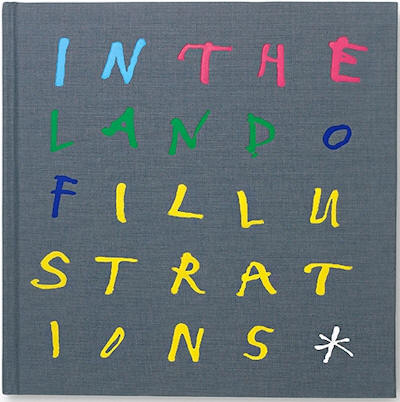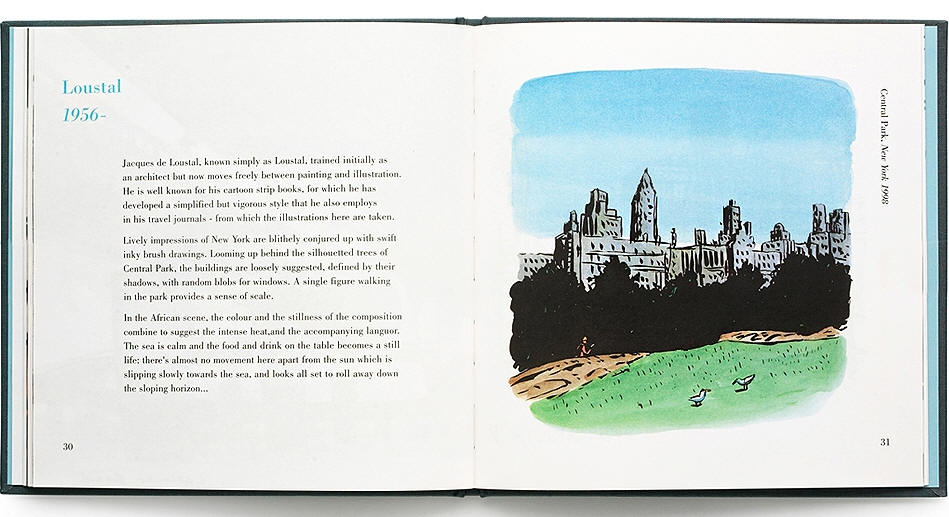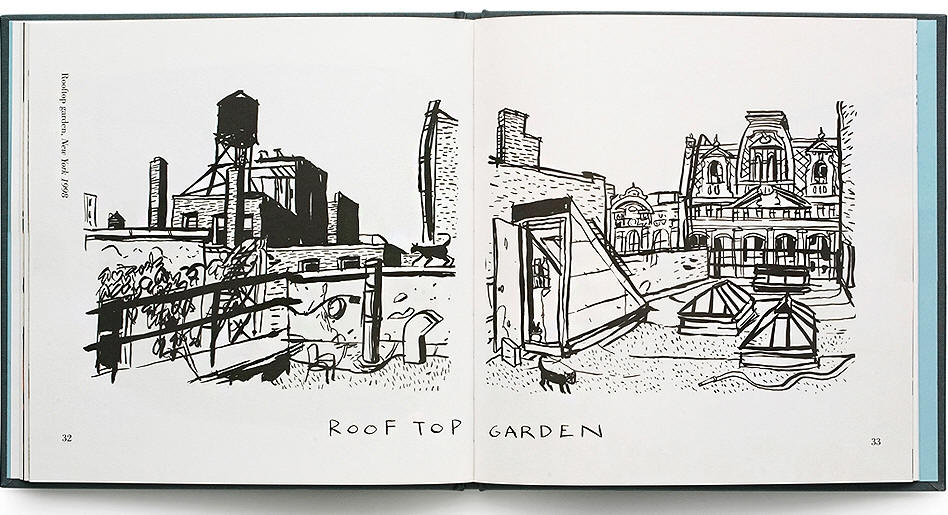2006 In the land of illustrations

In the land of illustrations.
BLAKE, Quentin And Joanna Carey. ( Artists Include Quentin Blake, Ludwig
Bemelmans, Paul Hogarth, David Gentleman, Jacques de Loustal, Lucinda
Rogers, Linda Kitson.)
Editorial: Privately Printed, No Place Noted (Uk), 2006 First Edition.
Hardback. No Dustjacket., 2006
All proceeds from the sale of this book go to support British Heart
Foundation
In 2005 the Prince of Wales Arts and Kids Foundation (now Children and the
Arts) created a drawing project for teachers and schoolchildren accompanied
by a book
Loustal 1956 -
Jacques de Loustal, known simply as Loustal, trained initially as an
architect but now moves freely between painting and illustration.
He is well known for his cartoon strip book, for which he has developed a
simplified but vigorous style that he also employs in his travel journals
from which the illustrations here are taken.
Lively impressions of New York are blithely conjured up with swift inky
brush drawings. Looming up behind the silhouetted trees of Central Park, the
buildings are loosely suggested, defined by their shadows, with random blobs
for windows. A single figure walking in the park provides a sense of scale.
In the African scene, the colour and the stillness of the composition
combine to suggest the intense heat, and the accompanying languor.
The sea is calm and the food and drink on the table becomes a still life:
here's almost no movement here apart from the sun which is slipping slowly
towards the sea, and looks all set to roll away down the sloping horizon…
Introduction by Quentin Blake
“Some people like definitions, but I’m not sure, though I have been earning
my living by illustration for most of my life, that I would be very good at
giving a definition of it. I know at least that it has to do with drawings
often done to appear in books or magazines; that sometimes it accompanies
words that tell a story, or tells its own story; sometimes it conveys
information — think of medical illustration or natural history illustration
— and sometimes, as in caricature, it exists just for the sake of comment. I
could think of many other examples, and I suppose my problem is that I am
never quite sure where illustration ends — and discussing where it ends can
be quite a long conversation.
“At any rate, enough young people have a sense of what illustration is for a
surprising number of them to write to me to ask about it and to say that
they want to be illustrators when they grow up — which is why I hope that
they will be interested in the challenge put forward in The Land of
Illustrations. One of the uses of illustration that I haven’t mentioned is
to record places and the people who live in them. Frequently, of course,
these drawings are of faraway or unfamiliar places — they can give the
reader/or spectator a vivid sense of what it is like to be there. But it is
also possible to carry out this task for the place you live in and are
familiar with, and this is what we are asking you to do for your own town or
city or region. When you start to do that you may find that it too is a sort
of voyage of discovery. You may want to find out how some things came to be
there, or how they have changed over the years; you may want to go into
buildings you have never thought of entering before; you may want to draw
the Mayor (him or her) or the person who looks after the Mayor’s office.
“All the artists in this book (apart from me — I’m not an expert) have
special talents for the depiction of people and places. You may find help in
the work of one or other of them in deciding how you set about you own work.
However, we haven’t gathered them together to suggest that you imitate them,
but just to show there are many different ways of drawing the life of your
own place. You may have some interesting or quite new ones of you own. We
look forward eagerly to seeing what they are.”
|
|


